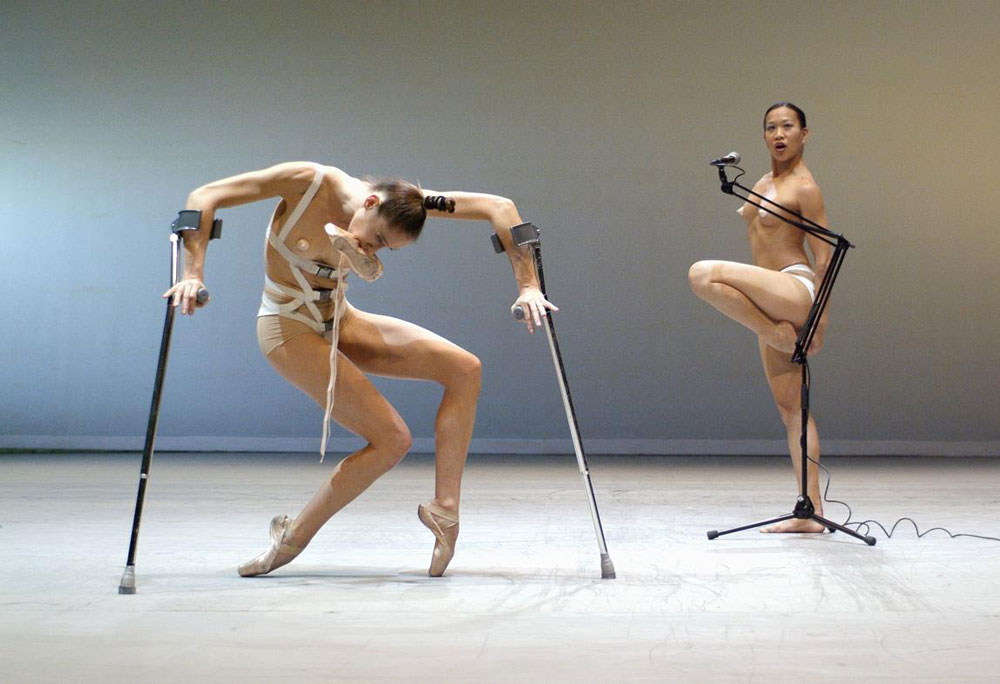Marie Chouinard, a Montreal choreographer known around the world for her experimental approach, has been appointed director of the dance section at the Venice Biennale.
Chouinard’s term as director will last four years, from 2017 to 2020.
Chouinard is no stranger to Venice. In 2005, she presented the world premiere there of her bODY rEMIX/gOLDBERG vARIATIONS, in which 10 dancers use “different devices—crutches, rope, prostheses, horizontal bars, and harnesses—which at times liberate their movements, at others fetter it, and at still others create it,” according to the Compagnie Marie Chouinard website.
She also presented works at the Venice Biennale’s dance programs in 1999, 2001, and 2010.
“At the Biennale, I will have the opportunity to present physical practices, teachers, works and artists I believe in, who open our patterns of thought and perception to other dimensions, forcing dialogue between our habits and ourselves, between our mental structures and our freedom, towards renewed beauty, towards invigorated inclusion, towards expanded love.” Chouinard said in a Venice Biennale press release. “So I will have the opportunity to present my vision and my joy in ways other than simply through my own works, works that I will continuously create, ardently.”
Chouinard added, “Do we really have more than five senses? Yes of course. Life is always amazing and Venice always sings”.
In terms of honours, Chouinard, born in 1955 in Quebec City, has already received the Order of Canada, the Bessie Award in New York, and France’s Ordre des Arts et des Lettres. Her works have been produced by the Ballets de Monte-Carlo, the Gotesborgs Opera and the National Ballet of Canada, among other companies.
“My source has always been the body itself, and especially the silence and the breath which make up the ‘invisible’ stuff of life,” Chouinard states on her website. “At the root of each new work there is always what I call the ‘mystery,’ an unknown wavelength that calls out to me in an almost obsessive manner. My work consists of capturing this primordial wavelength, of ‘tuning’ it in a sense, and of arranging it in space and time with a structure and form proper to it.”

 Marie Chouinard choreographed bODY_rEMIX/gOLDBERG_vARIATIONS in Venice in 2005; it's one of her many boundary-pushing works. This scene form the work features dancers Carol Prieur and Chi Long. Photo: Marie Chouinard via Facebook.
Marie Chouinard choreographed bODY_rEMIX/gOLDBERG_vARIATIONS in Venice in 2005; it's one of her many boundary-pushing works. This scene form the work features dancers Carol Prieur and Chi Long. Photo: Marie Chouinard via Facebook.







